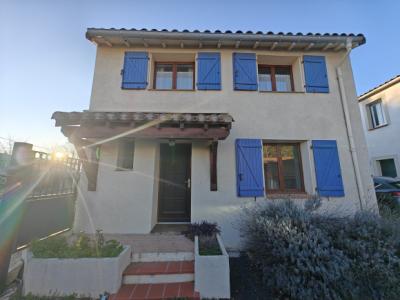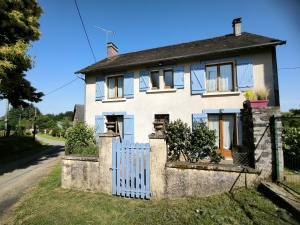Population Facts
Population structure
The ageing of the population is common to western Europe, but because of low birth rates it has been observable in France since the beginning of the 19th century. By the end of the 20th century, one-fifth of French citizens were at least 60 years old. The tendency for the proportion of the elderly population to increase also reflects medical advances, which have produced a longer expectation of life. The age structure of the population is of considerable social and economic importance. The steady increase in the proportion of the aged puts an increasing strain on the working population to provide pensions, medical and social services, and retirement housing. The increase in births between 1944 and the mid-1970s, however, brought its own problems, notably the need to rush through a school-building program, followed by the creation of new universities. But this demographically young population also stimulated the economy by creating a greater demand for consumer goods and housing.
Another important aspect of population structure is the proportion of men to women, in society as a whole and in the various age groups. As in most western European countries, women outnumber men in French society and particularly in the older age groups, which is the result of two factors: the wars, which caused the death of a large number of men, and the natural inequality of life expectancy for men and women. A French woman at birth has one of the highest life expectancies in the world (83 years), while a man's is much lower (75 years), although still relatively high when compared with the world in general. The ratio of men to women in employment is another measure of population structure, and in the late 20th century women steadily increased their share of the job market.
Population distribution
Particularly low population densities are characteristic of the mountain regions, such as the Massif Central, the southern Alps, the Pyrenees, and Corsica, but are also reflected in some lowland rural areas, such as the eastern and southern Paris Basin and large parts of Aquitaine. The four least-populated French régions—Corsica, Limousin, Franche-Comté, and Auvergne—have one-sixteenth of the national population in about one-eighth of the area. By contrast, the four most populated French régions—Île-de-France (Paris region), Rhône-Alpes, Provence–Alpes–Côte d'Azur, and Nord–Pas-de-Calais—have more than two-fifths of the French population in less than one-fifth of the area. Other high-density areas are the industrial cities of Lorraine; isolated large cities, such as Toulouse; and certain small-farm areas, such as coastal Brittany, Flanders, Alsace, and the Limagne basin of Auvergne.
Until about the mid-19th century, rural and urban populations both increased; thereafter there was a marked depopulation of the more remote, mostly mountainous, rural areas and a swing to urban growth. In the space of a century, from the 1860s to the 1960s, rural population decreased by more than one-third, though since that time it has remained constant, numbering 13.6 million in both 1962 and 1999. There were still as many rural as urban inhabitants even up to the period between the two World Wars, but by the 1980s three-fourths of the population was urban, which it currently remains. Postwar rural depopulation was associated with the exodus of labour following the modernization of French agriculture. At the time, rural areas were left with an aging population and low birth rates as the young departed to the cities, especially to the growing industrial régions of Nord–Pas-de-Calais, Lorraine, and Île-de-France.
The massive postwar movement from rural areas to the cities was supplemented by immigration, which also focused on urban areas where employment was available. Because immigrants to the cities tended to be young adults of childbearing age, city dwellers multiplied. Urban population growth in the 30 years after World War II was estimated to be at least 16 million persons. Subsequent urban growth was due in part to expanding city limits and was characterized by urban sprawl, accelerated redistribution from city centres to suburban outskirts, though some rebalancing toward the centre has occurred in recent years.
From about 1975, migratory flows were greatly modified, the most immediate cause being economic. The older industrial régions, such as Nord–Pas-de-Calais and Lorraine, were in decline and had become regions of out-migration. The most dramatic reversal was that of the deindustrialized Île-de-France région; although still the greatest population concentration of France, it had a negative migration balance after 1975. Growth subsequently switched to the south, to the coastlands of Languedoc and of Provence–Alpes–Côte d'Azur; to the west, in the Atlantic régions of Poitou-Charentes and Pays de la Loire; and to the southwest, in the Midi-Pyrénées and Aquitaine régions. These shifts reflect a combination of economic decentralization, retirement migration, sunbelt industrialization, changing residential preferences, and expanding tourism. Population increase has also been strong on the southern and western fringes of the Paris Basin, favoured for industrial decentralization from the Île-de-France région.
Since World War II, urban growth in France has been accompanied by marked suburbanization. This trend was initiated much earlier in Paris, a densely built-up city that leveled off at a maximum population of about 2.8 million in the period 1911–54 and declined thereafter. Proportionately the decline set in much earlier: in 1876 the city of Paris had 60 percent of the population of what was to become the Île-de-France région; in 1921, 51 percent; in 1954, 39 percent; and in 1999, 19 percent. The century after 1850 witnessed the rise of the industrialized inner suburbs (the petite couronne) outside the walls of the city. There maximum population was reached in the 1970s, followed by a decline associated with a marked degree of deindustrialization. Since the 1980s, population growth has been concentrated in the outer Paris suburbs ( grande couronne), which by 1999 accounted for 44 percent of the total population of the Île-de-France région, compared with 37 percent in the declining inner suburbs.
In the first half of the 20th century, suburban growth, where it did occur, was not the result of middle-class suburbanization, as it was in the United States and the United Kingdom. It was the working class and the lower middle classes that moved out, while higher-income groups endeavoured to maintain a foothold in central Paris. In the postwar period, however, suburbanization took increasingly middle-class forms, with the building up of satellite low-density subdivisions known as “new villages.” Similar postwar suburbanization occurred in cities such as Marseille, Lyon, Lille, and Bordeaux.
Increasingly, the most rapid population growth is relegated to small towns and nominally rural communes on the expanding fringes of the city regions. This dispersal of population is associated with an increasing length of daily commuter movements, with all their human disadvantages, as well as other problems of urban sprawl. Vacation travel, very popular among the French, involves the movement of crowds of people during the peak seasons, particularly during school vacations and in August, when many people take their paid holiday and leave the city. Transport facilities and popular vacation spots become saturated, especially the coastal areas and mountains.
Population: total: 64,057,790
note:60,876,136 in metropolitan France (July 2008 est.)
Age structure:
0-14 years: 18.6% (male 6,091,571/female 5,803,127)
15-64 years: 65.2% (male 20,884,919/female 20,849,988)
65 years and over: 16.2% (male 4,335,996/female 6,092,189) (2008 est.)
Median age:
total: 39.2 years
male: 37.7 years
female: 40.7 years (2008 est.)
Population growth rate: 0.574% (2008 est.)
Birth rate: 12.73 births/1,000 population (2008 est.)
Death rate: 8.48 deaths/1,000 population (2008 est.)
Net migration rate: 1.48 migrant(s)/1,000 population (2008 est.)
Sex ratio: at birth: 1.05 male(s)/female
under 15 years: 1.05 male(s)/female
15-64 years: 1 male(s)/female
65 years and over: 0.71 male(s)/female
total population: 0.96 male(s)/female (2008 est.)
Infant mortality rate:
total: 3.36 deaths/1,000 live births
male: 3.69 deaths/1,000 live births
female: 3.02 deaths/1,000 live births (2008 est.)
Life expectancy at birth:
total population: 80.87 years
male: 77.68 years
female: 84.23 years (2008 est.)
Total fertility rate: 1.98 children born/woman (2008 est.)
Blog submitted by: David at Cle France.







